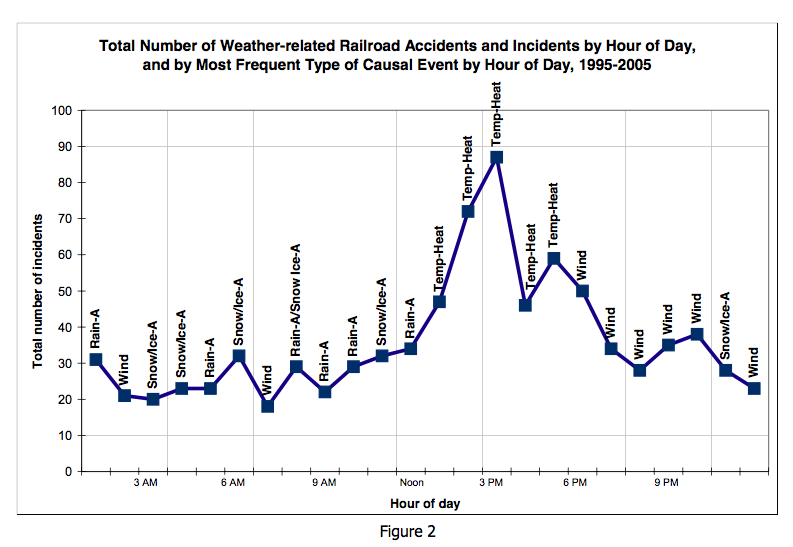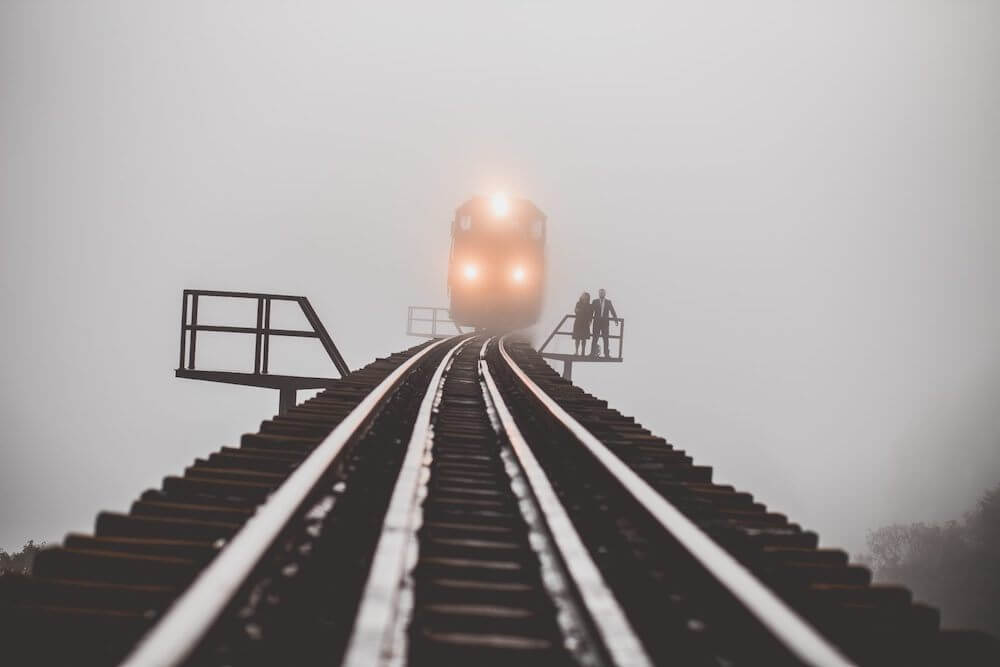Railways are a vital transport network that may not be affected by traffic jams as much as cars on highways, but the weather affects them just the same. Cold, icy, foggy, rainy, snowy, and windy conditions can disrupt railway operations and are dangerous to passengers and railway crews and operators. In fact, a study found that “Derailments are the initial consequence in about 75-percent of all weather-related railroad accidents.” Traditional weather data forces rail companies to adopt a reactive posture to the weather, but new MicroWeather data and weather software for railways can provide opportunities to be proactive, plus increase safety and efficiency in the face of any conditions. Here’s how weather parameters affect rail companies – and some of the advantages of advance, microscale weather data along each route.
Damage to railway infrastructure:
It’s no good to be surprised by a flash flood or a big storm mid-journey. Rain can lead to track-damaging flooding, while extreme heat can warp tracks, causing them to be replaced. Rain, ice, and lightning can all cause electrical damage to trains and other infrastructure. Since most trains require electrical systems to run, it could be helpful for operators to know when to delay or cancel a train’s departure with more lead time, and to know the lightning threat level along any given route.
Blocked tracks:
Snow accumulation can physically block train tracks so snow clearing operations need to have the best weather data in order to know what’s coming down the line. Strong winds can cause delays when tracks get blocked by debris, in addition to the danger of derailment. Even leaves falling from trees can make it harder for the train to travel down the track.
Travel delays:
In addition to blocked tracks, reduced visibility in rainy or snowy conditions can cause delays on the railway. Weather software for railways can provide a highly localized minute-by-minute precipitation forecast and can help rail companies plan for delays and communicate them earlier to commuters.
Safety:
City-wide hourly data is not enough for railway companies. In a paper that studied RAIRS reports for 40,000 railway accidents, it was found that there were more incidents at certain hours of the day – specifically, from noon to 6:00 PM related to either rain, high heat, or wind.
Railway companies need data that is refreshed minute-by-minute with real observations, not just extrapolated estimates. They can benefit from seeing granular nowcast data for every minute in the next 6 hours at precise locations – anywhere on route.

A chart showing a spike in railways incidents related to weather at 3pm: Total Number of Weather-related Railroad Accidents and Incidents by Hour of Day and by Most Frequent Type of Casual Event by Hour of Day
Tomorrow.io delivers this data to railways so they can:
1. Make better decisions about starting/stopping operations around major weather
2. Warn railway workers and passengers in locations that may be affected by dangerous lightning conditions
3. Monitor every stretch of track for different conditions that could affect travel and outdoor crew
Try the HyperCast visual weather software for railways or the MicroWeather API today to stream MicroWeather data into your railway apps and business processes.















